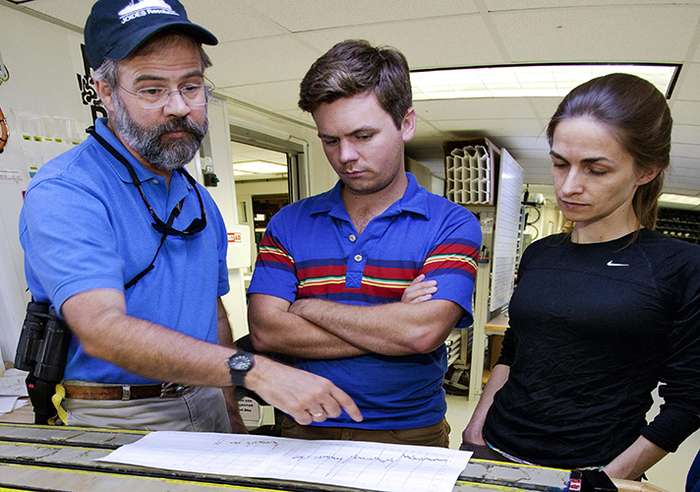New evidence of a long-term planetary thermostat to remove excess CO2

Scientists working in the North Atlantic have found the clearest geologic evidence yet of a planetary thermostat that counteracts the warming cause by massive amounts of greenhouse gas by absorbing CO2 into the rocky sediments of the Earth itself.
The researchers said they analyzed ocean floor sediment off the coast of Newfoundland to confirm a sudden release and subsequent removal of CO2 that occurred 56 million years ago during the Paleocene-Eocene Thermal Maximum (PETM). That event, in which thousands of petagrams of carbon were released into the atmosphere and ocean in just a few thousand years, is considered by many researchers to be the closest ancient analogue to today's rise in atmospheric carbon levels.
"It's long been thought that when the planet warms, as it did during the PETM, the rate of rock weathering on land, which absorbs CO2 from the atmosphere, increases. This draws down CO2 and cools the planet back down again," said Yale University geologist Donald E. Penman, a postdoctoral fellow in the lab of Pincelli Hull and first author of a paper reporting the findings in the journal Nature Geoscience.
The products of that weathering process, Penman explained, are dissolved ions that end up in the ocean, where organisms such as plankton and corals turn them into calcium carbonate. The carbon is not fully removed from the system until that calcium carbonate is buried in sediments.
"What our paper details is a pulse of carbonate burial in the aftermath of the PETM," Penman said. "We analyzed a sediment core in which, before the PETM, there is no carbonate at all, and then in the recovery phase of the event, it has lots of carbonate."
The work builds upon a large body of research about carbon cycling begun a generation ago by the late Yale geochemist Robert Berner. It was Berner who pioneered the notion of a planetary thermostat mechanism via rock weathering and carbonate burial in sediments.
Penman and his co-authors collected core samples from sea floor sediments located in an area known as the Newfoundland sediment drifts. The effort was part of a research voyage undertaken by the Integrated Ocean Drilling Program, aboard the scientific drilling ship JOIDES Resolution. The chief scientists on the voyage were Richard Norris of the Scripps Institute of Oceanography and Paul Wilson of the University of Southampton, in the United Kingdom. Norris is a co-author of the new paper.
The data will help scientists as they try to understand the causes and effects of the PETM, say the researchers, and also may provide insight into how Earth will handle rising carbon levels in the future.
"We believe this process is going to operate in response to carbon emissions related to human activity," Penman said. "But if the PETM is any guide, it will take tens of thousands of years."
More information: An abyssal carbonate compensation depth overshoot in the aftermath of the Paleocene-Eocene Thermal Maximum, Nature Geoscience, DOI: 10.1038/ngeo2757
Journal information: Nature Geoscience
Provided by Yale University



















